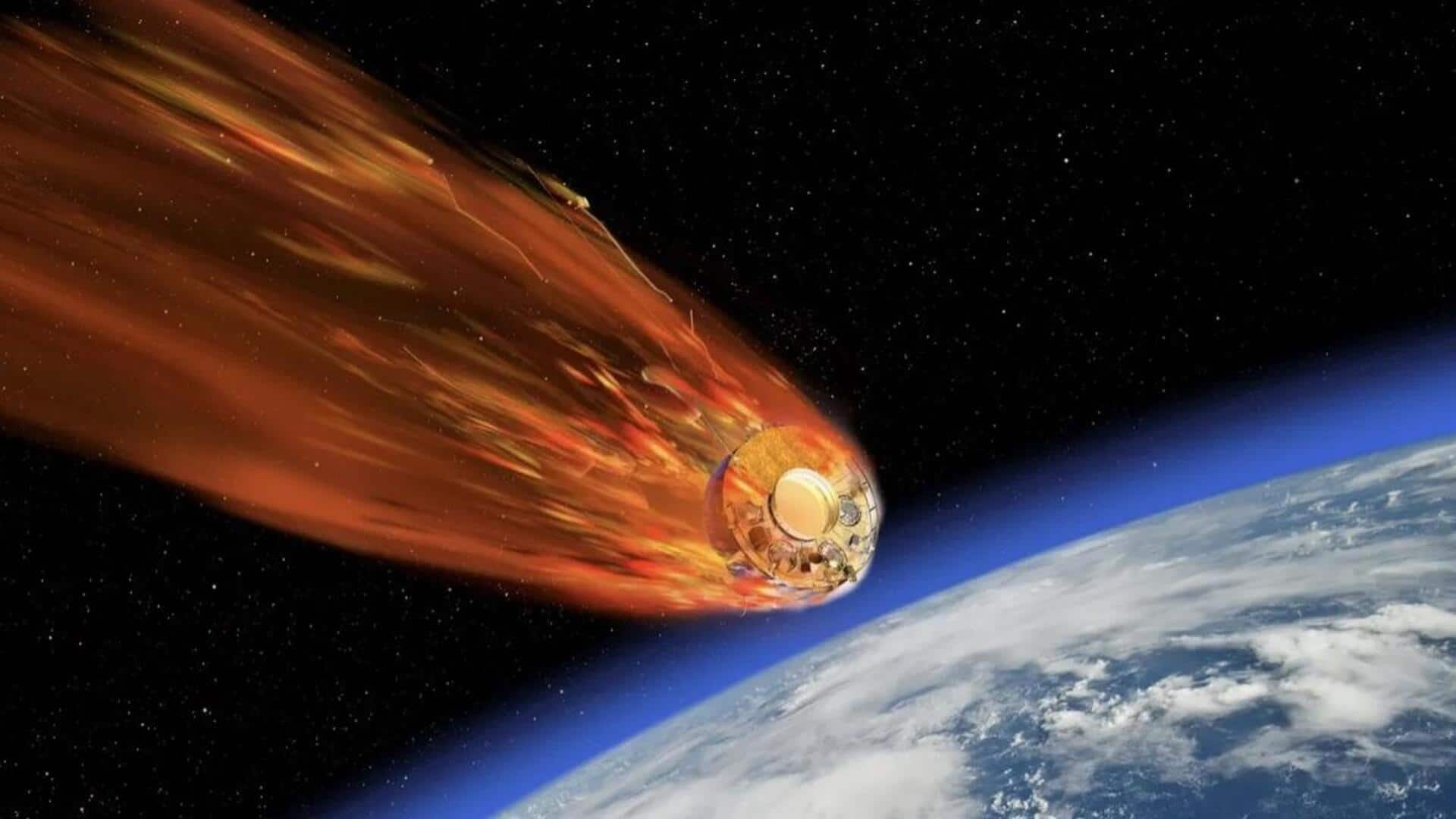
India in risk zone as Soviet satellite makes uncontrolled descent
What's the story
A Soviet-era spacecraft, Kosmos 482, is hurtling toward Earth in an uncontrolled descent. While the exact date of its re-entry remains uncertain, NASA has projected it to occur between May 9 and May 13. An estimated map shows that several countries across the globe are at risk from this event, including India. Other nations potentially affected include Australia, South Africa, and those in South America.
Spacecraft history
Kosmos 482: A relic from the Soviet era
Launched on March 31, 1972, Kosmos 482 was initially slated for a mission to Venus. However, due to technical malfunctions, it has been orbiting Earth for over five decades. Now, this out-of-control spacecraft is heading back toward our planet with no ground control. Scientists have calculated that the satellite could land anywhere between 52 degrees north or south of the equator.
Risk assessment
Potential impact zones of Kosmos 482
The potential impact zone covers large swathes in the US, Europe, Asia, and Africa. The Atlantic and Pacific Oceans are also included in the zone. While the chances of it landing in water are high considering the Earth's vast oceans, there is still a major risk of it crashing onto a densely populated area such as a city.
Design flaw
Kosmos 482's design could prevent disintegration
Unlike most re-entering man-made objects that disintegrate upon re-entry, Kosmos 482 was designed to withstand Venus's harsh conditions. This makes it more likely to survive its descent through Earth's atmosphere intact. The possibility of an undamaged spacecraft hitting a populated area poses a unique challenge for scientists trying to predict where it might land.
Historical precedent
Past incidents of uncontrolled spacecraft re-entry
This isn't the first time an uncontrolled spacecraft has re-entered Earth's atmosphere. In 1978, a Soviet reconnaissance satellite, Kosmos 954, fell back to Earth uncontrollably over Canada. The satellite crashed into Canada's Northwest Territories and dispersed toxic waste. Following this incident, the USSR was held accountable for damages under the 1967 Outer Space Treaty and the 1972 Space Liability Convention.